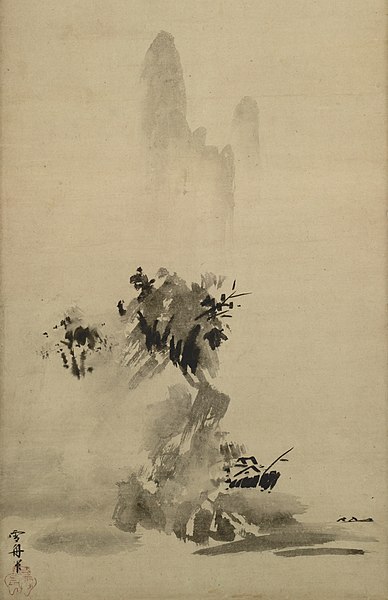Zen Buddhism had an important influence on Japanese painting during the Muromachi period. Zen is a form of Mahayaana Buddhism which developed in China and later flourished in Japan. It is NOT a matter of chilling out and being passive; it does involve spontaneity, but only in contrast to great discipline.
"Zen Buddhism’s emphasis on simplicity and the importance of the natural world generated a distinctive aesthetic, which is expressed by the terms wabi and sabi. These two amorphous concepts are used to express a sense of rusticity, melancholy, loneliness, naturalness, and age, so that a misshapen, worn peasant’s jar is considered more beautiful than a pristine, carefully crafted dish. While the latter pleases the senses, the former stimulates the mind and emotions to contemplate the essence of reality. This artistic sensibility has had an enormous impact on Japanese culture up to modern times."Zen had a huge influence on Japanese art, as we'll see. It meshes very well with the Shinto aesthetic. But the best place to begin is with paintings like the one above by Sesshu Toyo, a Buddhist monk, using the Haboku (or "Broken Ink") style.

